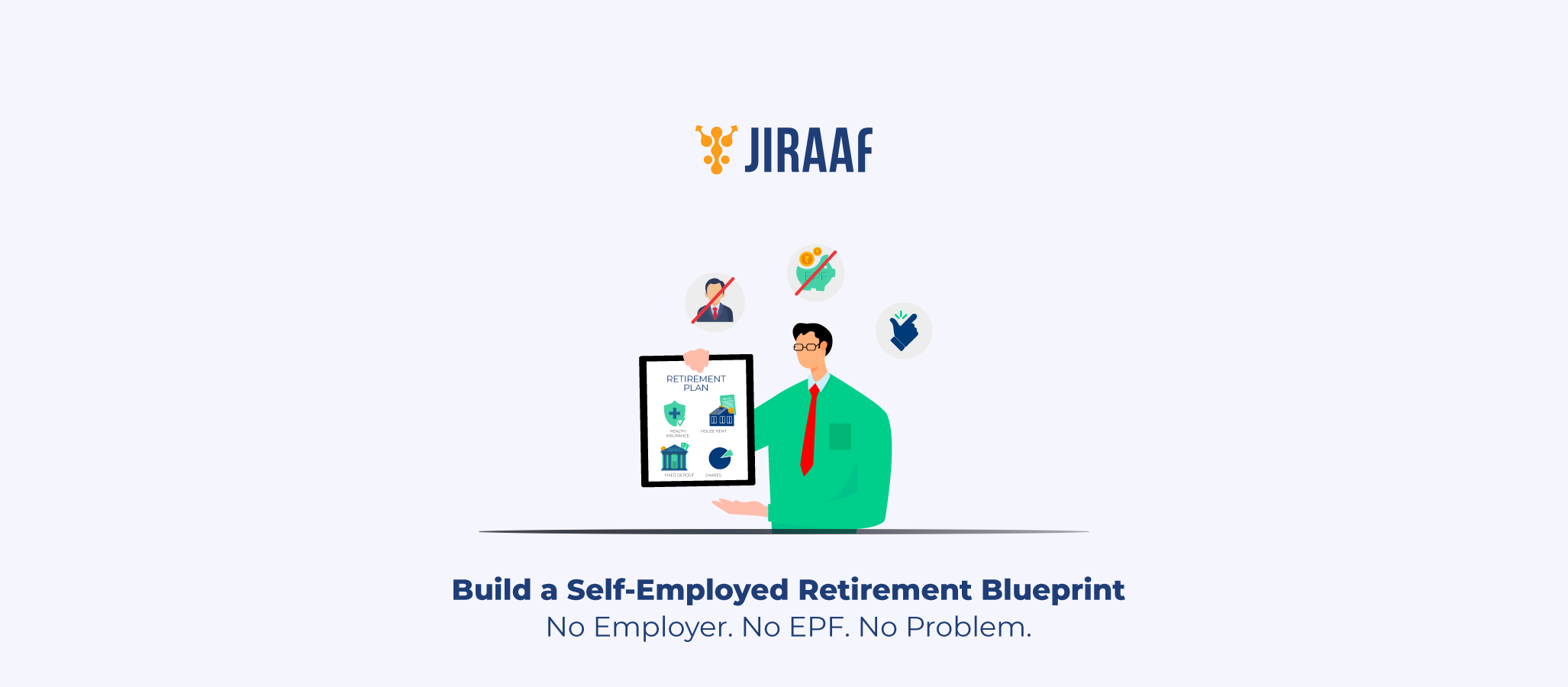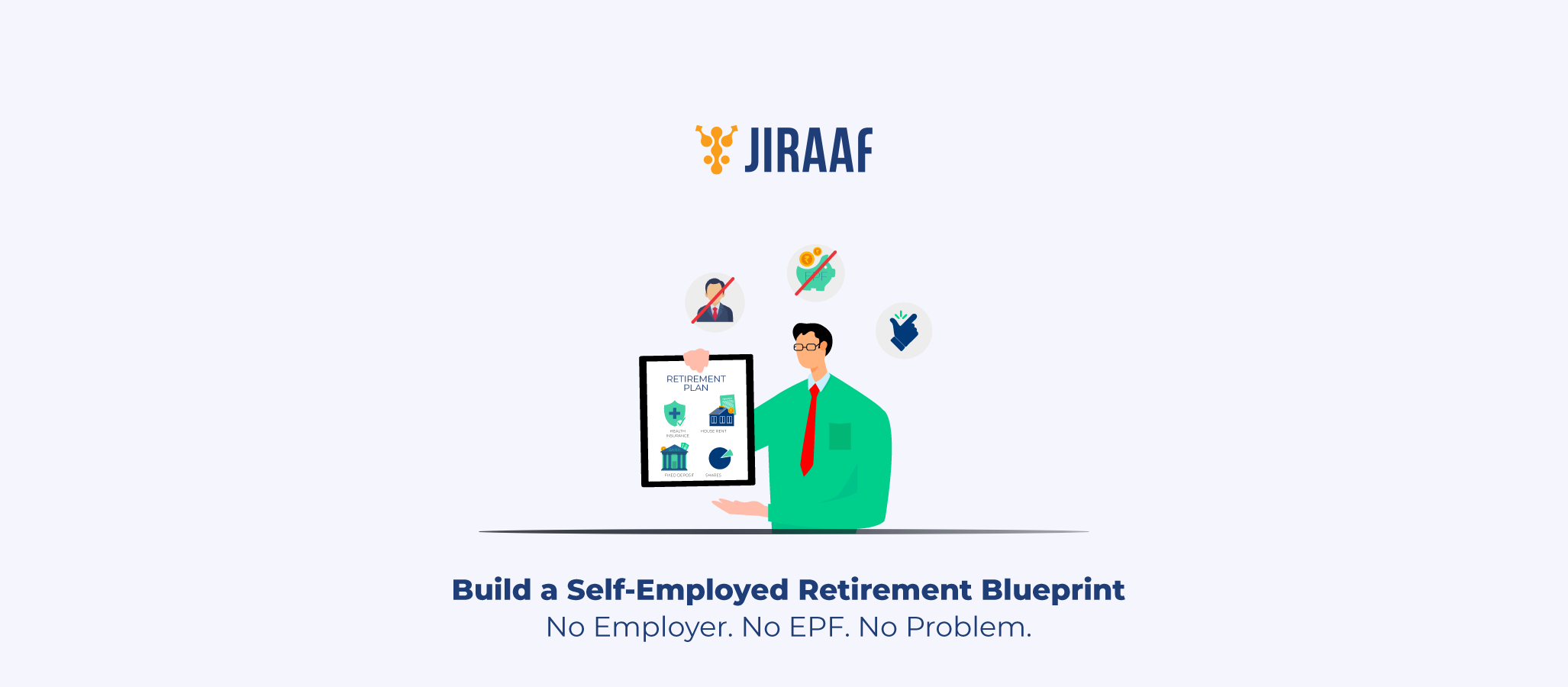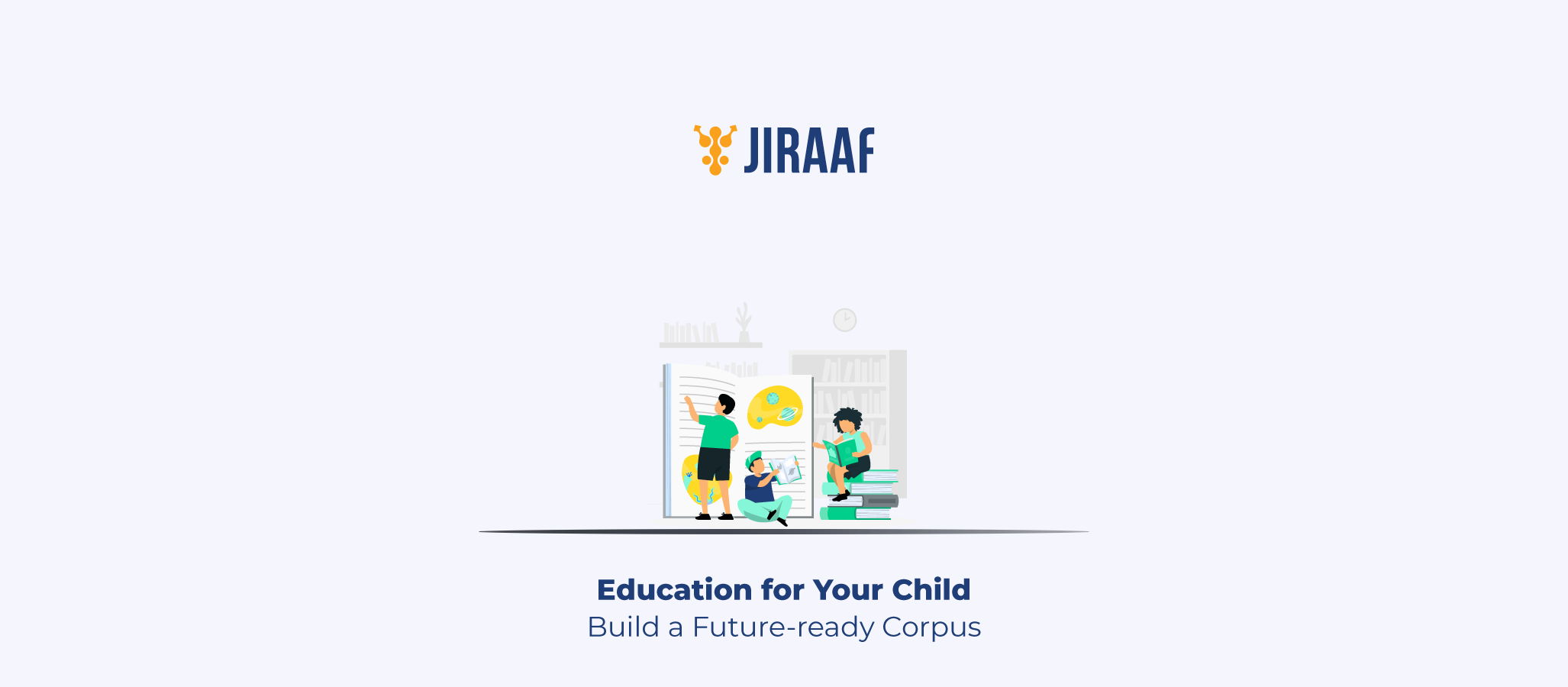Picture this: You’re in your early 40s, waking up without an alarm, sipping coffee at a scenic beachside café, and knowing you never have to work for money again—unless you want to. Sounds like a dream? For many Gen Zs, this vision isn’t just wishful thinking; it’s a financial goal.
The desire for financial independence and to retire early has gained momentum, thanks to the Financial Independence Retire Early (FIRE) strategy. Unlike the previous generations who relied on pensions or long corporate careers, Gen Z is rewriting the rulebook. With digital income sources, investing tools, and financial literacy at their fingertips, they’re embracing the FIRE strategy as a pathway to freedom. But how can someone retire in their 40s while ensuring a financially secure future? The answer lies in strategic planning, disciplined savings, and investing wisely.
Let’s break down the step-by-step strategy for achieving FIRE while understanding why corporate bonds are a valuable addition to your portfolio.
Understanding Gen Z and Their Financial Aspirations
If you are a Gen Z (born between 1997 and 2012), you probably unlike any generation before you. Tech-savvy, value-driven, and entrepreneurial, you see work as a means to an end rather than a lifelong commitment.
What Defines your Financial Outlook?
- Digital-first mindset – You must be savvy with online platforms for banking, investing, and financial planning and prefer to rely on easy-to-use apps and fintech solutions over traditional financial institutions.
- Emphasis on passive income – Rather than depending solely on salaries, you seek alternative income streams like freelancing, side hustles, and investments.
- Skepticism about traditional employment – Having witnessed many layoffs, stagnant wages, and economic downturns, you must be wary of depending on a single job.
Challenges you Face
- Rising cost of living – Inflation, expensive housing, and education costs make wealth accumulation harder.
- Debt burden – Student loans and credit card debt can slow down savings and investments.
- Job market volatility – Rapid changes in industries mean traditional job security is no longer guaranteed.
- Misinformation in financial planning – Social media offers financial advice, but not all of it is sound. Many struggle to differentiate between good and bad investment strategies.
Despite these challenges, you have an unprecedented opportunity to achieve financial independence early—especially with investment vehicles like corporate bonds, which provide stable, predictable income.
What is FIRE? The Basics Explained
The Financial Independence, Retire Early (FIRE) movement is about saving aggressively, investing wisely, and reaching financial freedom decades ahead of the traditional retirement age.
Different Types of FIRE
- Lean FIRE – Living frugally to retire on a relatively small nest egg.
- Fat FIRE – Accumulating enough wealth to maintain a luxurious lifestyle in retirement.
- Barista FIRE – Achieving partial financial independence but continuing part-time work for benefits or personal satisfaction.
- Coast FIRE – Investing aggressively early on so that compound interest allows retirement savings to grow without additional contributions.
Core FIRE Principles
- High savings rate – Typically, FIRE followers save 50% or more of their income.
- Frugal living – Cutting unnecessary expenses to maximize savings.
- Investing in income-generating assets – Stocks, real estate, corporate bonds, and alternative investments to create passive income streams.
- Strategic withdrawal planning – Using the 4% rule or alternative methods to ensure long-term financial sustainability.
For Gen Z, FIRE isn’t just about quitting work—it’s about having the financial flexibility to do what they love.
The FIRE Mindset: Psychological Aspects of Early Retirement
Achieving financial independence isn’t just about numbers—it requires a fundamental mindset shift.
- Delayed Gratification: FIRE demands short-term sacrifices (lower expenses, aggressive savings) for long-term freedom.
- Financial Discipline: Consistently tracking finances, budgeting, and resisting impulsive spending are key.
- Embracing the Journey: FIRE isn’t about depriving yourself; it’s about consciously aligning spending with values to reach financial freedom faster.
- Staying Motivated: Celebrating small milestones (like hitting the first ₹50L or generating passive income from bonds) helps sustain motivation.
Understanding the psychological aspect makes the FIRE journey more sustainable and rewarding over time.
Step-by-Step FIRE Strategy for Gen Zs
Achieving FIRE isn’t about luck—it’s about careful planning, disciplined execution, and smart investing. If you are a Gen Z, here’s how you can reach financial independence in your 40s:
1. Set Clear Financial Goals
The first step to FIRE is determining how much money you need to retire.
- Calculate your FIRE number: This is 25 times your annual expenses (based on the 4% withdrawal rule).
- Example: If you need ₹10 lakh annually to maintain your lifestyle, your FIRE number is ₹2.5 crore.
| Expense Category | Monthly Cost (₹) | Annual Cost (₹) |
| Housing | 30,000 | 3,60,000 |
| Groceries | 10,000 | 1,20,000 |
| Transportation | 5,000 | 60,000 |
| Entertainment | 5,000 | 60,000 |
| Travel | 15,000 | 1,80,000 |
| Healthcare | 10,000 | 1,20,000 |
| Miscellaneous | 5,000 | 60,000 |
| Total | 80,000 | 9,60,000 |
Your goal should be to accumulate 25 times this amount of ‘Annual Cost’ in investments.
2. Maximize Savings & Minimize Debt
- Increase your savings rate – Aim for 50%+ of income.
- Live below your means – Cut non-essential expenses.
- Avoid lifestyle inflation – Just because you earn more doesn’t mean you should spend more.
- Eliminate high-interest debt – Pay off credit cards, personal loans, and student debt as soon as possible.
3. Invest Wisely: Beyond Just Stocks
Stocks provide growth, but over-reliance on them exposes investors to market volatility. Diversification is key.
- Equities (Index Funds & ETFs) – Long-term growth potential.
- Corporate Bonds – Stable, predictable income with lower risk.
- Real Estate – Rental income and appreciation.
- Alternative Investments – REITs, P2P lending, and digital assets.
4. Use Online Investment Platforms
Thanks to SEBI-regulated online bond platforms, investing in corporate bonds is now easier than ever. These platforms provide:
- Transparency – Access to credit ratings, yield details, and issuer information.
- Accessibility – Retail investors can buy bonds directly.
- Easy transactions – Digital platforms enable quick investing.
5. Track Progress & Adjust Accordingly
- Regularly review your portfolio – Ensure it aligns with your FIRE goals.
- Rebalance assets – Adjust based on market conditions.
- Stay adaptable – Financial strategies should evolve with life changes.
A FIRE journey requires patience, but by making strategic investments like corporate bonds, you can achieve financial independence faster and with greater stability.
Additional Insights on Portfolio Rebalancing
Investing for FIRE isn’t just about setting and forgetting your portfolio. Periodic rebalancing is crucial to keep risk in check and ensure alignment with financial goals.
- When to rebalance: Ideally, once a year or when an asset class deviates significantly from its target allocation.
- How to rebalance: Periodically adjust asset allocation by trimming overweight assets and reinvesting in under-allocated ones to maintain the desired risk-return balance.
- Gen Z’s advantage: With time on their side, they can take higher risks early (more equities) and gradually shift towards safer assets like corporate bonds for stability.
This dynamic adjustment ensures a well-diversified, risk-optimized portfolio over time.
A Case Study: A Gen Z Investor on the FIRE Path
Let’s take an example of Rohan, a 25-year-old software developer, who has set his sights on FIRE by age 42. Here’s how he structures his finances:
Rohan’s FIRE Plan
| Financial Aspect | Strategy Implemented |
| Income & Savings | Earns ₹18 LPA, saves 60% of income |
| Expenses | Lives on ₹6 LPA (frugal lifestyle, no debt) |
| Investments | 60% in equities & mutual funds, 30% in corporate bonds, 10% in alternative assets |
| FIRE Number | ₹8 Crores (Annual expenses ₹30L x 25) |
| Passive Income Strategy | Uses bond interest & dividends to supplement living costs |
By following a disciplined investing strategy, Rohan aims to hit ₹8 Crores in 17 years, ensuring he can retire early with a stable passive income from corporate bonds and equities.
For reaching his target within time, Rohan will have to stick to the following.
- Reinvestment and Portfolio Adjustments: Rohan will need to reinvest returns and increase savings as income grows.
- Higher Growth Assets: If he can allocate more towards corporate bonds with higher yields, his target can be accelerated.
- Additional Income Streams: Side hustles, real estate, or dividends can help.
The Role of Corporate Bonds in a FIRE Portfolio
Achieving early retirement requires a well-balanced investment strategy that generates stable, predictable income while managing risk effectively. While equities are the primary vehicle for long-term wealth accumulation, corporate bonds offer a crucial counterbalance, providing lower volatility and reliable passive income. They offer higher yields than fixed deposits and more stability compared to stocks. For FIRE investors, bonds provide passive income without the stress of stock market fluctuations.
Let’s compare the risk-return profile of bonds with other asset classes to see how they fit within a FIRE strategy.
| Investment Option | Average Returns (Annual) | Risk Level |
| Stocks (Equity) | 10-12% | High |
| High (AAA & AA) Rated Corporate Bonds | 7-9.5% | Moderate |
| High-Yield Corporate Bonds (Lower-Rated) | 10-14% | Moderate to slightly high |
| Fixed Deposits | 5-6% | Low |
| Real Estate | 8-10% | Moderate |
Why Corporate Bonds Matter in a FIRE Strategy
- Stable, High-Yield Income Source – Good Corporate bonds provide fixed interest payments, ensuring steady cash flow with higher yields (7-10%) compared to traditional fixed deposits (5-6%).
- Lower Risk Exposure – While equities are prone to market downturns, high-quality bonds offer capital preservation, reducing the likelihood of financial setbacks during retirement.
- Diversification Benefits – A well-diversified FIRE portfolio includes both growth-oriented assets (stocks) and income-generating assets (bonds) to optimize returns while minimizing risk.
- Better Risk-Adjusted Returns – Corporate bonds, especially high-yield ones, can provide attractive returns compared to traditional fixed deposits while maintaining a lower risk profile than stocks.
- Passive Income for FIRE Goals– Regular interest payouts ensure a steady cash flow during early retirement. It helps cover living expenses without dipping into principal investments.
Bonds vs. Other Assets’ Historical Returns: A Comparative View
To better understand how corporate bonds fit into a FIRE strategy, let’s compare their historical returns with equities and FDs:
| Investment Type | 5-Year Average Return | 10-Year Average Return | 15-Year Average Return | Risk Level | Suitable for FIRE? |
| Equities (NIFTY 50 Index) | ~12-15% | ~10-12% | ~9-11% | High | Yes, but volatile |
| Mutual Funds (Equity-oriented) | ~10-14% | ~9-11% | ~8-10% | Medium-High | Yes, but requires active monitoring |
| Corporate Bonds (AAA-Rated) | ~7-9% | ~7.5-8.5% | ~7-8% | Low-Medium | Yes, provides stability |
| Corporate Bonds (High-Yield) | ~9-12% | ~8.5-10% | ~8-9% | Medium-High | Yes, for risk-tolerant investors |
| Fixed Deposits (Bank FD) | ~5.5-6.5% | ~5.5-6.5% | ~5.5-6.5% | Low | No, returns may not beat inflation |
How Corporate Bonds Strengthen a FIRE Portfolio
- Passive Income Generation: By investing in bonds with regular interest payouts, FIRE investors can create a laddered income stream to cover expenses without liquidating assets.
- Inflation Protection with High-Yield Bonds: While traditional fixed deposits may fail to outpace inflation, well-selected corporate bonds can offer competitive returns while preserving principal.
How to Incorporate Corporate Bonds into Your FIRE Plan
- Strategic Allocation: While equities provide long-term growth, the increasing market volatility makes corporate bonds a compelling choice. A FIRE portfolio might begin with 65-75% equities and 25-35% bonds, gradually shifting towards a 50-60% equity and 40-50% bond mix as investors near financial independence. Post-FIRE, a 40% equity and 60% bond allocation can ensure steady passive income with reduced risk.
- Bond Laddering Strategy – Invest in bonds with different maturity periods to maintain consistent cash flow.
- Diversify – Hold a mix of government, AAA & AA-rated, and high-yield bonds for risk-adjusted returns.
- Reinvest Interest Income – Until full retirement, reinvesting payouts can accelerate your wealth accumulation.
- Use Online Bond Platforms – SEBI-regulated platforms make buying corporate bonds easy and transparent.
By strategically allocating funds into corporate bonds, FIRE investors can achieve financial independence while mitigating risk.
Conclusion & Call to Action
The idea of retiring in your 40s is no longer just a dream—it’s a real possibility for Gen Z, thanks to the FIRE movement. With smart financial planning, disciplined savings, and the right investment choices, financial independence is within reach.
Key Takeaways:
- Start early – The sooner you save and invest, the more you benefit from compound growth.
- Diversify your portfolio – A mix of equities, corporate bonds, and alternative investments ensures stability and growth.
- Prioritize passive income – Investments like corporate bonds provide reliable cash flow without stock market volatility.
- Use digital tools – Online bond platforms make investing in fixed-income assets seamless for retail investors.
- Stay flexible – FIRE isn’t just about quitting work—it’s about financial freedom and choices.
Corporate bonds play a critical role in early retirement planning, offering steady income, capital protection, and reduced volatility. A well-balanced FIRE portfolio that integrates both high-yield corporate bonds and growth-oriented equities can ensure financial independence with minimal stress. Investors can further enhance their strategy by using online bond platforms to access a diverse range of bonds, ensuring liquidity and ease of investment.
By leveraging the right mix of equities and corporate bonds, Gen Z investors can build a sustainable, low-stress early retirement plan.
If financial independence in your 40s sounds appealing, it’s time to take the first step and start investing wisely today!
Discover fixed income investments with Jiraaf, a SEBI registered online bonds platform that educates and brings access to a wide array of bonds. Sign up today to explore diversified fixed income investment opportunities to support your goal-based wealth creation journey. Start investing!




